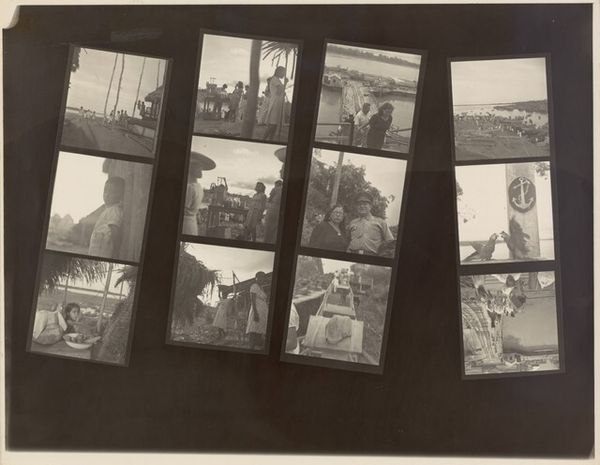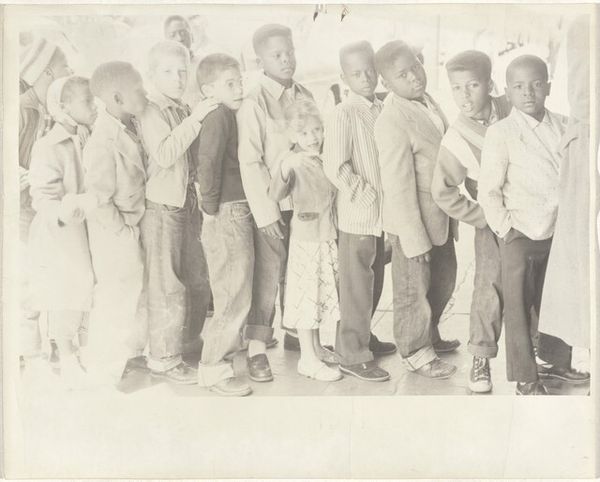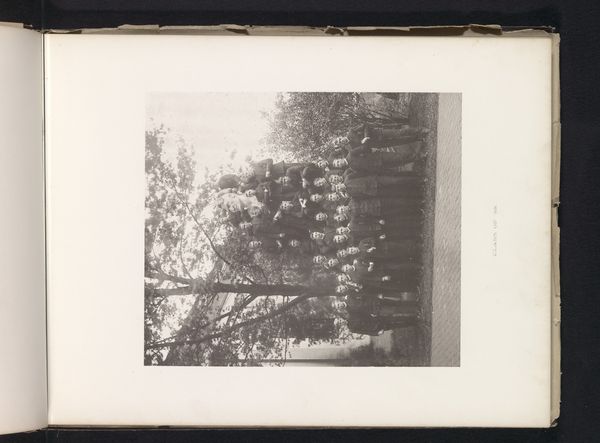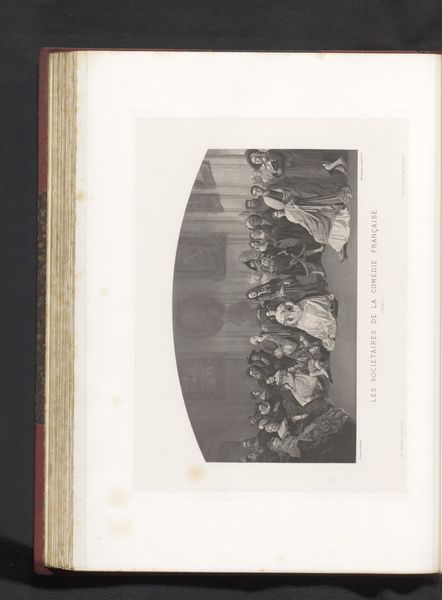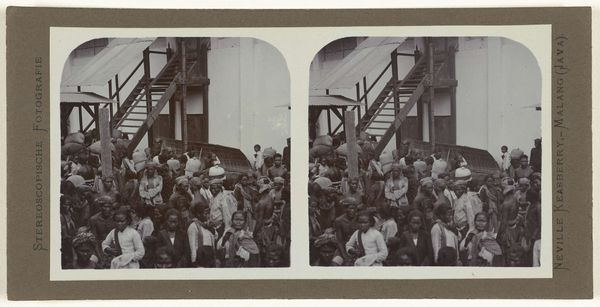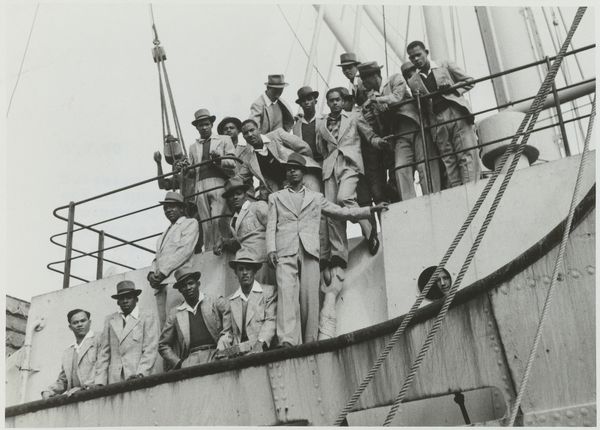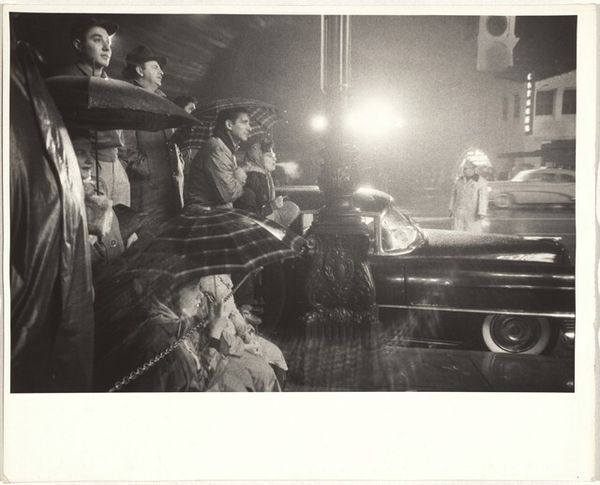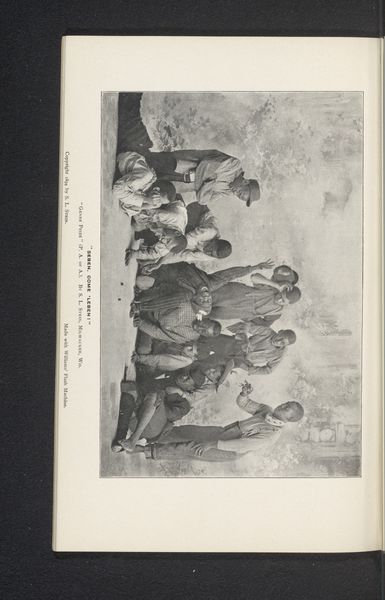
print, photography, gelatin-silver-print
# print
#
landscape
#
street-photography
#
photography
#
gelatin-silver-print
#
modernism
Dimensions: sheet: 20.2 x 25.2 cm (7 15/16 x 9 15/16 in.)
Copyright: National Gallery of Art: CC0 1.0
Editor: So this is Robert Frank's "Rose Bowl Parade—Pasadena, California" from 1956, a gelatin silver print. I’m struck by the rather oppressive mood, and all that empty space, despite the apparent subject of a celebratory parade. What do you see in this piece? Curator: The seemingly random composition is, in fact, carefully orchestrated to disrupt any simple reading of American optimism. Note the sea of faces, overwhelmingly male and seemingly emotionless. Frank is dissecting the spectacle, questioning whose America is being celebrated and who is being excluded. The stark contrast and the tilted angle contribute to this sense of unease. What does the blank space evoke for you? Editor: Isolation? A kind of absence? It’s strange to see so much nothingness in an image supposedly capturing a public celebration. It definitely makes you consider what's not being shown. Curator: Precisely. Frank, an immigrant himself, critiques the homogenizing forces at play in post-war American society. He highlights the anxieties beneath the surface of apparent prosperity. We might ask: Is this celebration truly inclusive? Are these figures active participants, or simply spectators in a manufactured narrative? Does the almost uniformly dressed appearance mask deeper issues? Editor: It’s as if the joy of the parade is suffocated by conformity and perhaps, unspoken inequalities. It’s definitely not the feel-good image I expected. Curator: Frank compels us to confront uncomfortable truths about power dynamics, the complexities of the American dream, and the subtle ways exclusion operates. He turns the celebratory into a question. Editor: It makes you think about the stories behind these faces and the silences within this supposedly triumphant moment in American history. Thanks; I definitely see more depth now. Curator: Indeed, it pushes us to always question dominant narratives, and to recognize that even in moments of apparent unity, power and representation are never neutral.
Comments
No comments
Be the first to comment and join the conversation on the ultimate creative platform.



